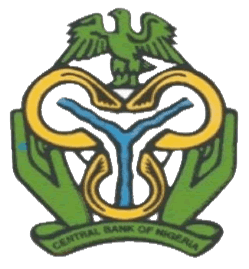Please use this identifier to cite or link to this item:
https://library.cbn.gov.ng:8443/jspui/handle/123456789/475Full metadata record
| DC Field | Value | Language |
|---|---|---|
| dc.contributor.author | Falegan, S. B. | - |
| dc.date.accessioned | 2018-10-23T11:30:33Z | - |
| dc.date.available | 2018-10-23T11:30:33Z | - |
| dc.date.issued | 1995-12 | - |
| dc.identifier.citation | Falegan, S. B. (1995). Central bank autonomy: historical and general perspective. Economic and Financial Review, 33(4), 416-428. | en_US |
| dc.identifier.issn | 1957 - 2968 | - |
| dc.identifier.uri | http://library.cbn.gov.ng:8092/jspui/handle/123456789/475 | - |
| dc.description.abstract | The issue of central bank autonomy is as old as central banking. This paper further reinforces the view that the debate is a continuous one, particularly in the present circumstance of the Central Bank of Nigeria's history. Central bank autonomy is often discussed in the context of the functions it performs. Some of the functions are statutory, non-statutory and developmental. Usually such functions include serving as fiscal agent to the government, lender of last resort for private financial institutions during emergencies, and a regulator and supervisor of the financial system. As the principal public sector agency charged with the execution of a country's monetary policy, however, the Bank can encounter a number of conflicting objectives. It must weigh long range economic growth against control of inflation and external balance. It is almost always under economic and political pressure to emphasize some goals at the expense of others in the formulation and conduct of monetary policy. The extent to which the Central Bank accommodates this pressure can depend greatly on its institutional independence. Independence of a central bank has always been discussed in the context of autonomy from governments. This is because there has always been some relationship between governments and central banks. Governments set in motion the setting up of central banks. Central banks are created by legislation and they derive their powers from such legislation. The government relies on the central bank to perform certain specialized functions on its behalf and provide certain services for the government. In such a situation, central banks cannot be completely separated from their countries government. In our comparative study of central bank independence, congnisance must be taken of the history and the ever-changing policy environment arising from changing or challenging economic developments. | en_US |
| dc.description.sponsorship | Central Bank of Nigeria | en_US |
| dc.language.iso | en | en_US |
| dc.publisher | Central Bank of Nigeria, Research Department. | en_US |
| dc.relation.ispartofseries | Vol. 33;No. 4 | - |
| dc.subject | Central bank autonomy, | en_US |
| dc.subject | Central banks, | en_US |
| dc.subject | Statutory and non-statutory functions, | en_US |
| dc.subject | Monetary policy. | en_US |
| dc.title | Central bank autonomy: historical and general perspective. | en_US |
| dc.type | Article | en_US |
| Appears in Collections: | Economic and Financial Review | |
Files in This Item:
| File | Description | Size | Format | |
|---|---|---|---|---|
| Central bank autonomy historical and general perpsective.pdf | 2.28 MB | Adobe PDF |  View/Open |
Items in DSpace are protected by copyright, with all rights reserved, unless otherwise indicated.
Admin Tools
